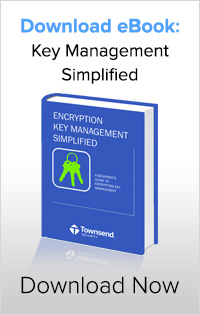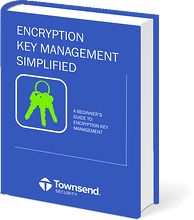The way organizations are managing encryption keys is falling under more scrutiny by Payment Card Industry (PCI) Qualified Security Assessor (QSA) auditors. Companies must demonstrate they are enforcing dual control and separation of duties in order to protect sensitive data.

Here are the answers to three of our most frequently asked questions about encryption key management on the IBM i:
Is it still effective to use an integrated key management solution that stores encryption keys in the same partition as the encrypted data?
The short and simple answer is No. There are many reasons why storing an encryption key on the same server that contains protected data is not advisable. This is not just an IBM i issue - it spans all of the current major operating systems. Let's explore this a bit more in the following sections.
How do IBM i users manage encryption keys according to PCI requirements with an encryption key manager?
Payment Card Industry - Data Security Standards (PCI DSS) requirement states the following requirements for encryption key management:
-
Dual Control means that at least two people should be required to authenticate before performing critical key management tasks.
-
Separation of Duties means that the individuals managing encryption keys should not have access to protected data such as credit cards, and those that have access to protected data should not have the authority to manage encryption keys.
How are the “dual control” and “separation of duties” requirements achieved on IBM i?
On the IBM i you simply can't achieve these PCI requirements if you store the encryption key in the same partition as the protected data.
The QSECOFR user profile (and any user profile with *ALLOBJ authority) will always have complete access to every asset on the system. An *ALLOBJ user can circumvent controls by changing another user's password, replacing master keys and key encryption keys, changing and/or
deleting system logs, managing validation lists, and directly accessing database files that contain encrypted data.
From the perspective of PCI, an integrated key management system puts too much control into the hands of any one single individual. The only way to comply with PCI requirements for key management is to store the encryption keys off of the IBM i. Take users with *ALLOBJ authority out of the picture completely. When you use a separate appliance to manage encryption keys you can grant a user access to the protected data on the IBM i and deny that same user access to the key manager. Now you have enforced separation of duties. And with the right key management appliance you can require TWO users to authenticate before keys can be managed, and have dual control of encryption keys.
Now it’s time to ask yourself a few questions!
-
Is your organization encrypting data on IBM i?
-
If so, how are you managing the encryption keys?
-
If you store the keys on a separate partition, have you had a recent PCI audit?
-
What did your auditor say?
 If you aren’t sure of the answers, or if this still seems foreign to you, take a few minutes to download our eBook "Encryption Key Management Simplified”.
If you aren’t sure of the answers, or if this still seems foreign to you, take a few minutes to download our eBook "Encryption Key Management Simplified”.
Whether you are an IT administrator or a business executive, this resource will help you learn the fundamentals of:
-
What is encryption key management
-
Key management best practices
-
How to meet compliance regulations (PCI-DSS, HIPAA/HITECH, GLBA/FFIEC, etc.) with encryption key management
-
How encryption key management works on every platform including Microsoft SQL Server '08/'12, Oracle, and IBM i
As always, we welcome your comments and suggestions! Let us know what you think of the eBook!
